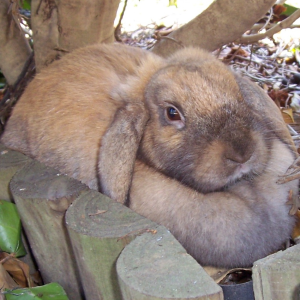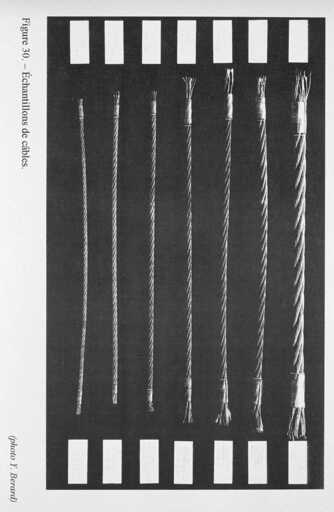Fwiw it looks like Cutipol is the brand and that Horne is just the retailer
MHLoppy
Currently studying CS and some other stuff. Best known for previously being top 50 (OCE) in LoL, expert RoN modder, and creator of RoN:EE’s community patch (CBP). He/him.
(header photo by Brian Maffitt)
- 4 Posts
- 53 Comments

 14·1 month ago
14·1 month agoKinda scary that the threadi (??) instance with the (probably) second-highest active users struggled enough to warrant a shutdown :(
Memory connected via the pci bus to the CPU, would be too slow for application use like that.
The experimental results presented in this paper demonstrate that Micron’s CZ122 CXL memory modules used in software level ratio based weighted interleave configuration significantly enhance memory bandwidth for HPC and AI workloads when used on systems with Intel’s 6th Generation Xeon processors.
Found via Wendell: YouTube
edit: typo
Using ram doesn’t add anything.
It would improve access latency vs flash though, despite less difference in raw bandwidth
Weirdly grateful right now that lemmy image embeds don’t work properly on mbin (they fall back to being ordinary URLs) 🫠

 4·3 months ago
4·3 months agoPlease don’t give the US any ideas ;_;

 1·3 months ago
1·3 months agoPresumably the member states can decide to interpret it however they’d like, but for whatever it’s worth I’m just paraphrasing what political scientist William Spaniel (…who I thought would have had a Wikipedia page by now) has said on the topic of Article 5 (though the context wasn’t the US invading Greenland lol)

 51·3 months ago
51·3 months agoAdditionally, it’s helpful to know the specific language used in Article 5:
Article 5
“The Parties agree that an armed attack against one or more of them in Europe or North America shall be considered an attack against them all and consequently they agree that, if such an armed attack occurs, each of them, in exercise of the right of individual or collective self-defence recognized by Article 51 of the Charter of the United Nations, will assist the Party or Parties so attacked by taking forthwith, individually and in concert with the other Parties, such action as it deems necessary, including the use of armed force, to restore and maintain the security of the North Atlantic area.
Any such armed attack and all measures taken as a result thereof shall immediately be reported to the Security Council. Such measures shall be terminated when the Security Council has taken the measures necessary to restore and maintain international peace and security.” (emphasis added)
Article 5 doesn’t actually oblige NATO members to defend anything by force, it obliges NATO members to decide what actions are “deemed necessary” and then to undertake those actions. If a NATO member gets invaded, everyone could – in theory – write a sternly worded letter and call it a day (though I doubt that would be the actual response). As you/others have more or less said, the actual action chosen would largely be the result of political will.

 4·3 months ago
4·3 months agoI don’t know how well this works for Macs, but is a multi-boot environment a possibility? You could have a separate OS set up for a group of tasks which you boot into when you need to do that. It seems a bit clunky compared to e.g., virtual desktops or similar though.

 2·3 months ago
2·3 months agoIt’s technically an option, yeah, but as you said it’s not something practically used as an “everyday” feed-sorting algorithm. It’s not as though it’s a default or suggested sort option - compare that to Mastodon where it’s the only sort option X_X

 6·3 months ago
6·3 months agoDefinitely agree that the the common-with-Mastodon viewpoint of exclusively using chronological feeds seems to have over-corrected too far. Can you imagine if the threadiverse was sorted that way? It would be insane and essentially unusable at scale - so we can at least acknowledge that sorting algorithms have a useful place and are not some unsalvageable, irredeemable evil. I wish there was something like a bunch of open source algorithms which the user could choose between in whatever UI they’re using. At the very least there should be some acknowledgement that I, the user, don’t have an identical level of interest in every account I follow, or even in every topic which the same account posts about.
And while microblogging platforms seem to have it worst, there have also been times in the threadiverse where I’ve subscribed to a community/magazine only to later unsubscribe because the activity levels it produces in my feed are much higher than my interest levels in it. So even here (where we have sorting by “hot” etc), some kind of user-configurable weighting would be nice to better match how I actually want my feed to work!
edit: typo

 4·4 months ago
4·4 months agoFor what it’s worth I generally agree with you, and especially think the people who treat /all as their own personal feed are nuts, but nonetheless it’s something that some people do 🫠
Everyone has their own preferences about how to use things!

 10·4 months ago
10·4 months agoBrowsing the global/all feed is one way to find new communities, and some people just like using it in general rather than defaulting to a subs-only view.
Just be aware that some places/connections have trouble connecting with it: https://catbox.moe/faq.php (under Connectivity Issues)

 10·4 months ago
10·4 months agoI seem to be missing some context - anyone want to fill in the rest of the class?
Edit: the image being shown to
lemmy userseverybody else is not being shown tombin usersme and/or fedia.io users (unclear)some unknown subsection of mbin users including me, so here it is for those like me: https://imgur.com/q4zuZzz

 6·4 months ago
6·4 months agoThe mbin equivalent (which is relevant to the OP) is
More->Open original URLorCopy original URL

 3·4 months ago
3·4 months agoUnfortunately seems to not work for mbin (which fedia.io runs)

 3·4 months ago
3·4 months agoBut (it sounds like) you’re talking about voluntary grouping, where if you dump 100 people together at a party or networking event or whatever, theoretical-person Amy will vibe best with certain types of people, and so ends up chatting up Cleo, Ming, and Kiara because they share similar interests / humor / whatever – but there’s nothing actually stopping someone from outside of that from walking up and chatting with the newly-formed group. That’s kind of what (I thought) we had now in the fediverse, where for example I can go talk about Australian news on aussie.zone, jump to lemmy.world to talk about fediverse stuff, swing by redd.that to look at Unraid updates (all communities I’m part of), but then browse the incoming feed of everything coming into my instance and view a whole lot of communities which I’m not part of, most of which I never will be. It’s (nearly) all open-by-default. Yes, there’s some blocking / defederation etc, but the default state is that users on one instance can (whether or not they actually choose to) talk to other instances.
If a new user randomly picks any instance from the top 50 (of any fediverse software, excluding maybe Pixelfed since that’s probably the least interoperable with the others) to join up on, chances are very good (but will vary based on personal interest) they’ll be able to participate in like >=90% of the conversations that they want to in the sense that their instance is federating with all the people and communities they’re interested in.
What I’m thinking-out-loud-ing (“arguing” sounds a bit more assertive than what I’m aiming for) is that this might not be how ActivityPub would optimally be used; maybe just because ActivityPub could allow 90% of users to talk to 90% of users, it doesn’t mean that’s actually the best way to use it. Maybe it serves the user’s interests better if there are clusters of “sub-fediverses” instead.
As a grounded example: Beehaw partially self-isolates from the wider fediverse (it’s not just that users could communicate but don’t; the connection is severed) in an effort to better maintain its vibe and values. I had always viewed that as the exception to the norm, but maybe having (e.g.,) clusters of instances that only communicate with a comparatively smaller amount of other instances, say the other instances in its “cluster” plus a few other clusters only (as opposed to most instances communicating with most other instances) is a different – and potentially healthier – way to architect things. So I guess partial, selective federation rather than (what felt to me like) the current goal of “if it uses ActivityPub, we want to communicate with it*”. * with obvious exclusions for spam etc.




FYI your first link isn’t actually inside of your spoiler tag